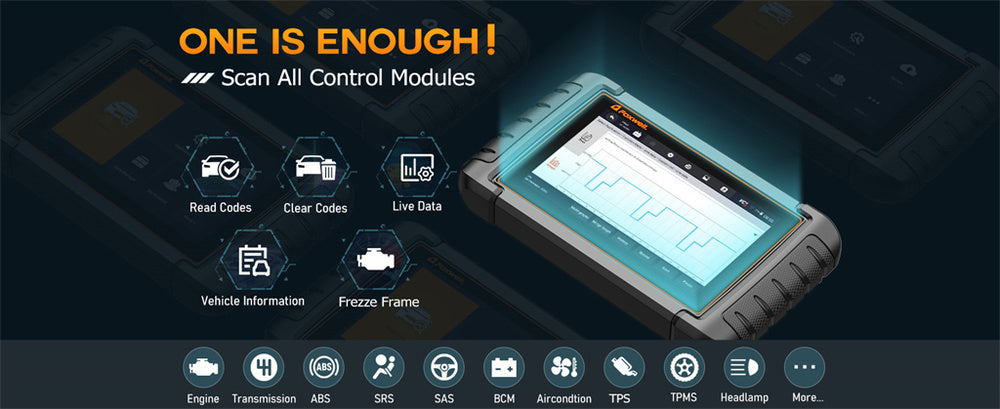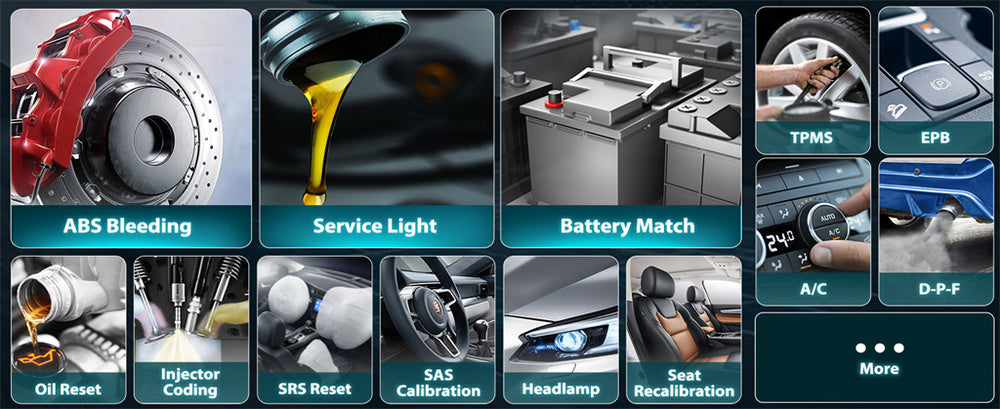A Diesel Particulate Filter (DPF) is a vital component in the exhaust system of a diesel vehicle. It traps and stores harmful soot particles produced by the engine, reducing harmful emissions.
Over time, the DPF can become clogged with these particles, leading to performance issues and even engine damage if not addressed promptly.
Blockages typically happen when the DPF is unable to carry out its "regeneration" process. Regeneration is a high-temperature procedure that burns off the soot buildup.
This process can fail for several reasons, including frequent short trips, stop-and-go driving, or low-speed driving that prevents the engine from reaching the necessary temperature.
A blocked DPF can result in reduced engine performance, warning lights on the dashboard, and potential damage to other engine components.
Signs Your DPF Might Be Blocked

Recognizing the signs of a blocked DPF early can help you avoid more serious issues. Here are some common symptoms:
- Dashboard Warning Light: Most vehicles have a dedicated DPF warning light that activates when the filter becomes clogged.
- Reduced Engine Performance: A blocked DPF can restrict exhaust flow, leading to noticeable power loss and sluggish acceleration.
- Increased Fuel Consumption: As the engine works harder to push exhaust through the blocked filter, fuel efficiency can drop.
- Strange Smells: A burning smell from the exhaust may indicate the DPF is overheating due to excessive soot buildup.
Can You Unblock a DPF Yourself?
Yes, in many cases, you can attempt to unblock a DPF yourself, especially if the blockage is minor. DIY methods can work well for light clogs, but severe blockages may require professional help.
Unblocking a DPF usually involves using a cleaning additive, performing a regeneration process, or, in some cases, manually cleaning the filter.
Below are the step-by-step methods you can use to try fixing a blocked DPF yourself.
Step-by-Step DIY Methods to Unblock a DPF
Using a DPF Cleaning Additive
One of the simplest ways to clear a mildly blocked DPF is to use a DPF cleaning additive. These additives are mixed with your fuel and work by breaking down soot deposits as you drive.
Steps:
- Purchase a DPF Cleaning Additive: Buy a reputable DPF cleaning additive from an auto parts store or online.
- Add the Additive: Fill your fuel tank and add the recommended amount of cleaner (check the product's instructions for the correct dosage).
- Drive at Highway Speeds: Drive your vehicle at highway speeds for at least 15-30 minutes. The higher engine temperatures will help the additive break down and burn off the soot buildup.
Tip: Try to maintain a consistent speed while driving. This method works best for minor blockages and can also be used as part of regular maintenance to prevent future clogging.
Performing Passive or Active Regeneration
Regeneration is a process where accumulated soot is burned off in the DPF. Most diesel vehicles automatically perform passive regeneration when driving under specific conditions. You can also trigger this process manually in some cases.
Steps:
- Drive at Highway Speeds: Drive for at least 20-30 minutes at speeds above 40 mph. This will allow the engine to reach the high temperatures necessary for passive regeneration.
- Avoid Stops: Minimize stops and avoid low-speed driving during this time, as it may interrupt the regeneration process.
- Use an OBD-II Scanner for Active Regeneration: If your vehicle supports active regeneration, you can use an OBD-II scanner like the Foxwell NT710 to monitor and manually activate the regeneration process.
This scanner connects to your vehicle’s diagnostic system and can help you detect DPF-related fault codes. On compatible vehicles, it can also trigger the regeneration cycle if the automatic process has failed to initiate.
Note: The Foxwell NT710 allows you to monitor real-time data and check if the regeneration was successful, ensuring your DPF is functioning properly.
Manual Cleaning: Is It Possible at Home?
Manual cleaning is more involved and requires removing the DPF from the exhaust system. While it’s possible to do this at home, it requires some mechanical expertise and the right tools. This is usually a last resort when other methods haven’t worked.
Steps:
- Locate and Remove the DPF: Consult your vehicle’s manual to find the DPF and learn how to safely remove it. The DPF is typically located near the exhaust manifold.
- Use a Specialized Cleaning Solution: Once the filter is removed, apply a DPF cleaning solution (available in foam or spray form) to break down the soot deposits. Follow the instructions on the product carefully for best results.
- Dry the Filter: Allow the filter to dry completely before reinstalling it.
- Warning: Manual cleaning can be tricky and may void your warranty if not done correctly. If you're unsure, it’s always safer to seek professional help.
Safety Tips and Precautions for DPF Cleaning
- Wear Protective Gear: Always wear gloves, safety glasses, and a mask if you're handling chemicals or working with exhaust parts.
- Ensure Proper Ventilation: Work in a well-ventilated area or outdoors, especially if you’re dealing with exhaust fumes.
- Follow Product Instructions: Carefully read and follow the instructions on any additives or cleaning products to avoid damage to the DPF.
- Avoid Short Trips After Cleaning: After cleaning the DPF, avoid short trips that might quickly re-accumulate soot. Highway driving helps maintain a clean filter.
Risks of DIY DPF Cleaning and When to Seek Professional Help
While DIY methods can work for minor blockages, there are some risks involved:
- Incorrect Cleaning: If done improperly, cleaning can damage the DPF, leading to costly repairs.
- Complexity of Manual Cleaning: Removing and cleaning a DPF is a complicated task that can void warranties if not done correctly.
- Severe Blockages: If the DPF is heavily clogged, or if DIY methods don’t resolve the issue, it’s best to consult a professional mechanic. They can perform forced regeneration, a high-temperature cleaning process that is more effective for severe blockages.
Tip: Regular maintenance, such as avoiding short trips and using cleaning additives, is the best way to prevent DPF blockages from occurring in the first place.
Conclusion
Unblocking a DPF can often be done at home with methods like using cleaning additives, performing regeneration drives, or manually cleaning the filter (in more advanced cases).
The Foxwell NT710 OBD-II scanner is a great tool for monitoring the DPF and, on compatible vehicles, initiating the regeneration process.
For prevention, consider using DPF cleaning additives regularly and take your vehicle on periodic highway drives to support passive regeneration. With a little care and attention, you can keep your DPF in good condition and avoid costly repairs down the line.
FAQs
Can a blocked DPF clear itself?
Yes, a mildly blocked DPF can clear itself through a process called passive regeneration, which occurs when the vehicle is driven at high speeds, allowing the exhaust temperature to burn off accumulated soot. However, if the DPF is heavily clogged, it may require manual intervention.
How do you clear a clogged DPF?
You can clear a clogged DPF by using a DPF cleaning additive, performing a passive or active regeneration (driving at highway speeds for a prolonged period), or, in severe cases, manually cleaning or taking the vehicle to a professional for a forced regeneration.
Is it OK to drive with a blocked DPF?
Driving with a blocked DPF is not recommended, as it can lead to reduced engine performance, increased fuel consumption, and potential engine damage. If left unaddressed, a blocked DPF may lead to costly repairs.




Leave a comment
This site is protected by hCaptcha and the hCaptcha Privacy Policy and Terms of Service apply.